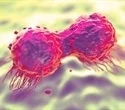
Isolated from other cells in a laboratory dish, tumor cells won’t reveal their actual nature.
Rice University researchers created an improved tumor model that houses osteosarcoma cells alongside immune cells known as macrophages inside a three-dimensional framework designed to simulate bone in order to better understand how they actually function. Bioengineer Antonios Mikos and colleagues discovered using the model that the immunological response of the body can make tumor cells more resistant to chemotherapy.
The research, which was published in Biomaterials, explains why some cancer treatments that look promising in the lab don’t always work out as well in real patients. It highlights flaws in conventional tumor modeling and points the way to more successful cancer treatmentsCancer cells are sensitive to the mechanical characteristics of their substrate, as Mikos’ lab had previously demonstrated.
Letitia Chim, the study’s lead author and a recent Rice University doctoral graduate, explained that cells are typically cultured on a flat surface, such as on a petri dish. “The disc-shaped scaffolds we created can be examined under a microscope to reveal that they are composed of these cell-recognizable fiber structures. The three-dimensionality of this substrate, which is more akin to bone structure, can be felt by the cells as opposed to a flat surface.”
Gelatin and an extremely rigid synthetic polymer are the two different components used to create the scaffolds. The ratio of the materials can be alteredResearchers found that increased inflammation caused by macrophages reduced the effectiveness of doxorubicin, one of the chemotherapeutic agents used to treat osteosarcoma, which is the most common form of bone cancer.
“We were interested in tumor-associated macrophages because they can make up to 50% of the tumor,” Chim said. “Tumors have sometimes been described as wounds that never heal, and that’s partly due to the macrophages sending out wound-healing signals. In normal tissue that works well, but it can also benefit the tumor.”
Preclinical models that mimic tumors more accurately can help researchers identify which therapies are most effective in a given context.
“This is going to be useful in order to design therapeutics that target not only the cancer cells but also the immune cells, or that trigger the immune cells to essentially change their function,” Mikos said.






